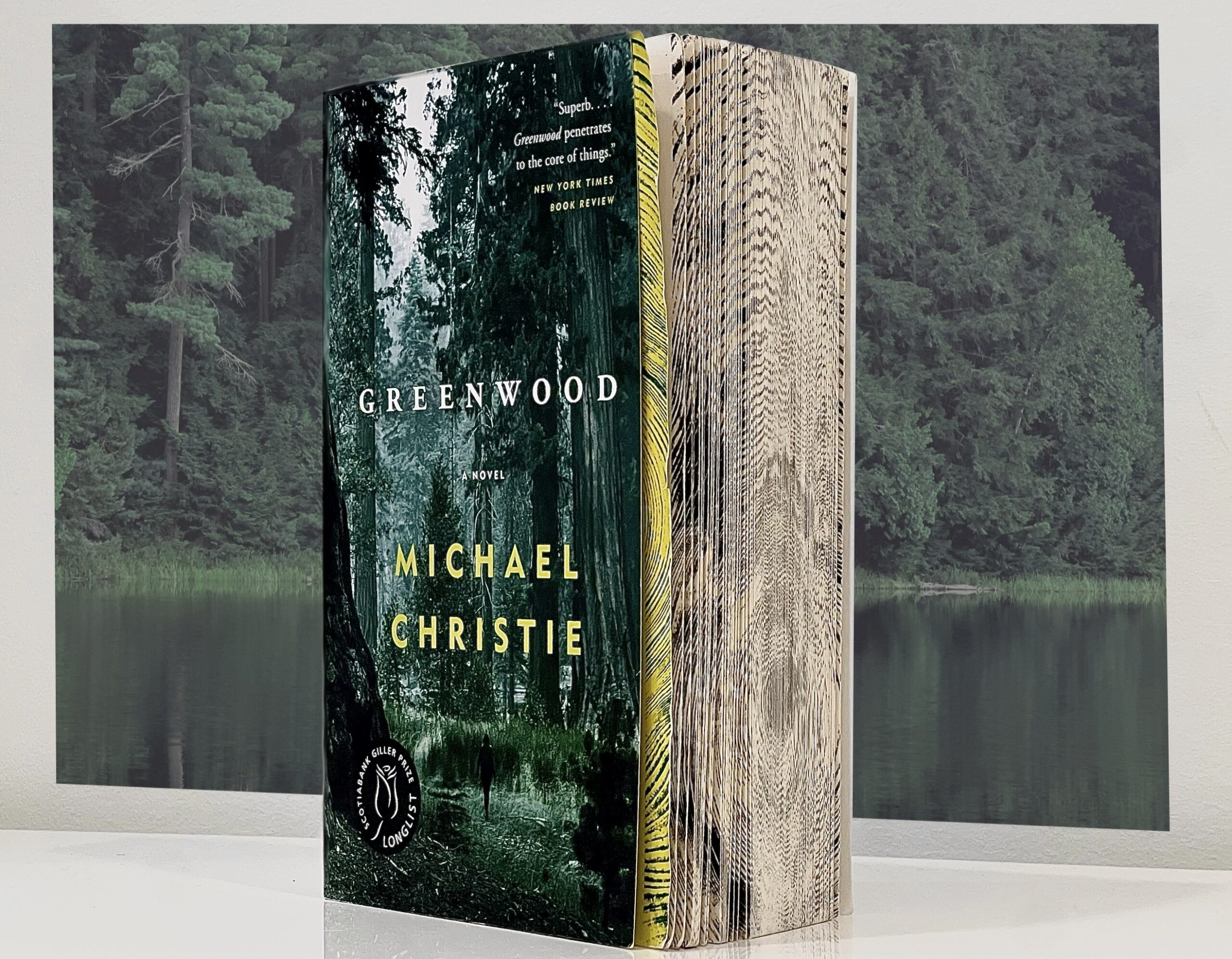Dendrology and deontology: A review of Michael Christie’s Greenwood
Michael Christie’s Greenwood is an ecocritical tour de force that challenges us to reconceptualize our notions of kinship and belonging while fostering a deeper empathy for fellow humans and the natural environment.
Michael Christie’s Greenwood is a multifocal, multitemporal masterpiece brimming with complex characters and their intricate relationships with a resilient yet ravaged natural world. The novel begins in a dystopian future populated by “climate refugees” and marked by a horrifying absence of the natural world. Rather than tracing the events that led to this reality, the story focuses on the Greenwood family and the significant role that trees have played in their lives.
The Greenwoods are followed across generations—both in terms of familial lineage and historical time—through 2038, 2008, 2974, and 1908 (sequentially travelling down through generations and returning up to the present moment in 2038). As such, the narrative structure shatters the linearity of time, presenting the cyclical nature of history that continually influences each generation. By exploring the interconnections and interdependencies, not just across generations but between humans and trees, the novel affirms how our relational capacity extends beyond our species. Arguably, this encourages readers to think beyond the consumptive, exploitative capitalist culture we live in to envision a more sustainable future.
Written in third-person omniscient narration, Greenwood is amongst many other dendrochronological narratives that focalize on multiple characters. What sets Christie’s novel apart is its refusal to “hero-ify” any character, instead portraying them with the nuanced complexity that makes them feel authentically real. Each character presents disparate views on living responsibly, not only with one another but also with the ecological and nonhuman world. The frustrating lack of communication between characters adds to the complexity of their relationships. These multidimensional characters make choices that can be exasperating, yet readers will find themselves unable to hate them. As a result, Christie’s novel exemplifies the power of literature as a tool to cultivate empathy.
Although the more ecocritical parts of the book certainly lament the destruction of trees, a significant aspect of the book focuses on the interpersonal. Specifically, the subjective experiences of alienation and belonging. Throughout the narrative, ideas of family and kinship are reconceptualized. Despite its trace through seeming ancestral lines, the story centres not on the genealogical family but instead on how bonds are created through chance encounters between strangers. As the novel best puts it, “Families are not born, they’re invented, pieced together from love and lies and nothing else.” Beyond this philosophical exploration of what constitutes “family,” the novel addresses a crucial moral question: should self-preservation ever take precedence over collective survival? Whether the novel provides a hopeful or definitive answer to this question is open to interpretation. Nevertheless, Greenwood remains a profoundly melancholic read that is essential for any literature enthusiast.

